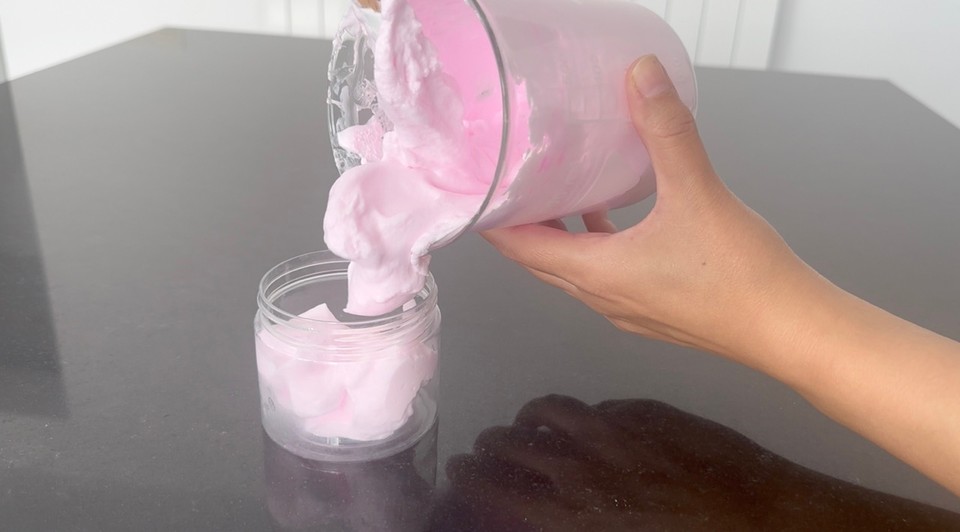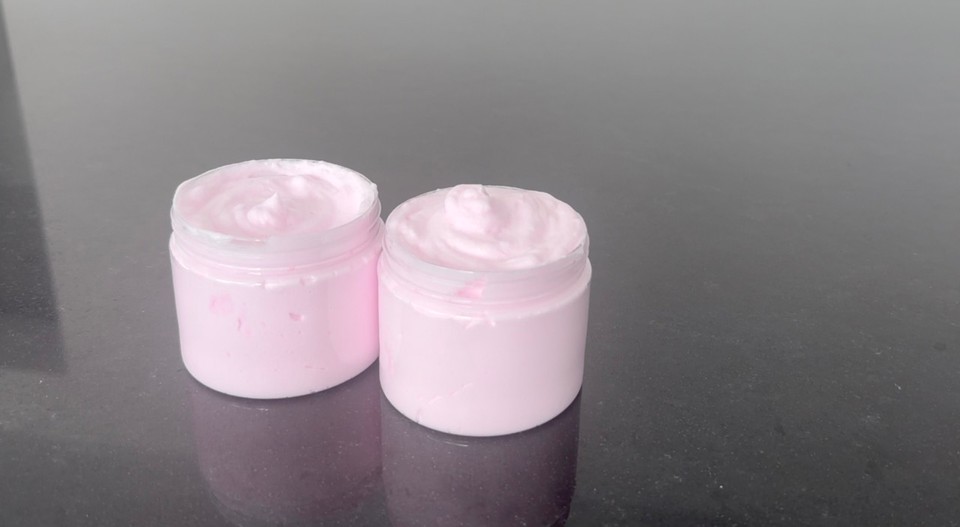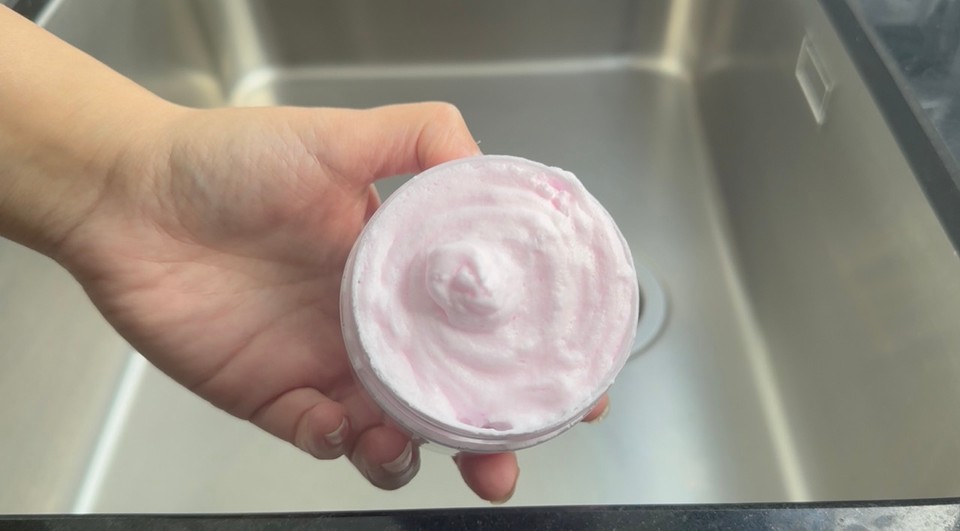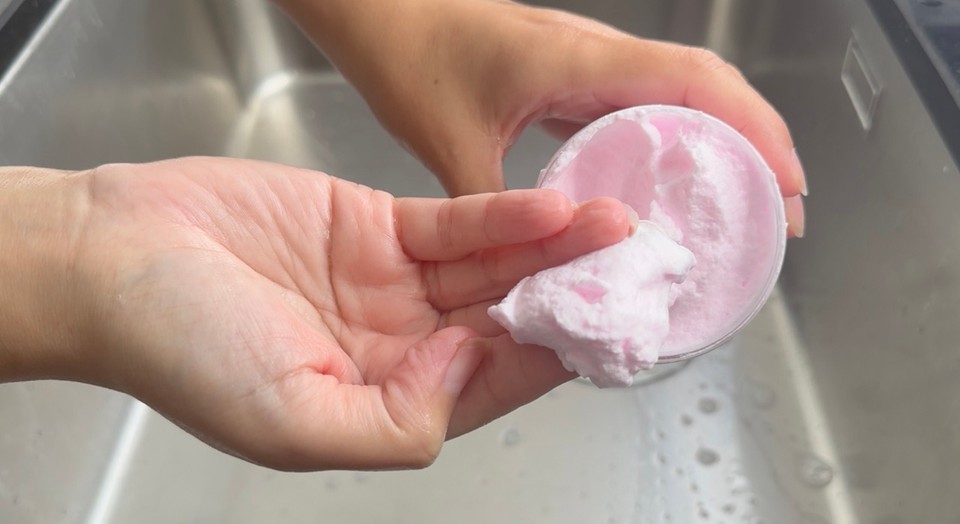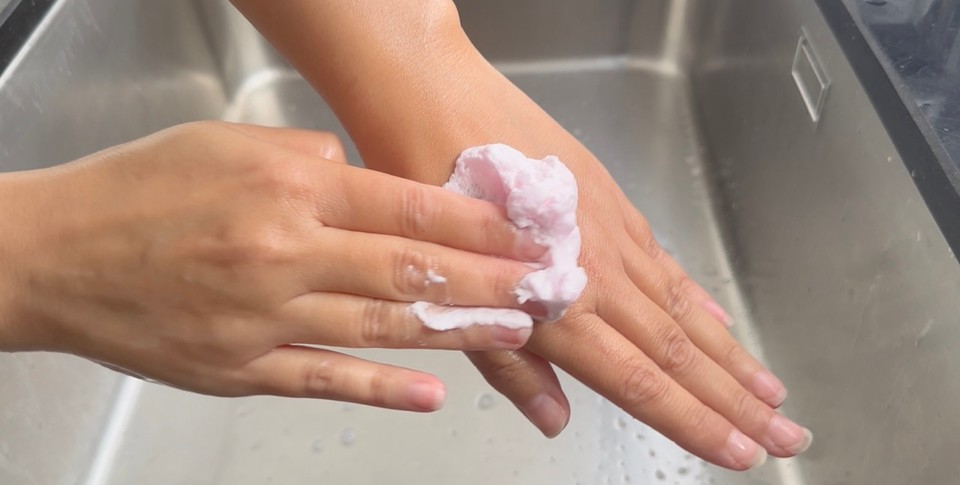Mousse Shampoo and Body Wash
| Phase | Ingredient | Percent (%) | Weight (g) |
|---|---|---|---|
| Phase A | Stearic acid | 2 | 2 |
| Cetyl alcohol | 1 | 1 | |
| Coconut oil | 3 | 3 | |
| SCI (Sodium Cocoyl Isethionate) | 21 | 21 | |
| Coco betaine (INCI - Aqua, Coco Betaine) | 4.6 | 4.6 | |
| Distilled water | 59 | 59 | |
| Phase B | Citric acid | 0.3 | 0.3 |
| Preservative Cosgard (INCI - Benzyl Alcohol, Dehydroacetic Acid, Aqua) | 0.8 | 0.8 | |
| Fragrance oil | 1 | 1 | |
| Panthenol (Provitamine B5) | 1 | 1 | |
| Glycerin | 5.3 | 5.3 | |
| Centella Asiatica Extract | 1 | 1 |
*** Optional: few drops of cosmetics liquid pink color (4-6 drops)

You can help support my website and channel through the “buy me a coffee” page.
Here is the link: https://www.buymeacoffee.com/diycosmetica
Your support helps me keep sharing here more information and more formulas.
A unique fluffy texture that melts in your hands and gives you a gentle hair and body cleanser, which can also be used as a shaving cream.
If you are more of a fan of solid hair care, please check out this Pourable Shampoo Bars formula or the Indigo Shampoo Bar formula. Also, check this solid shampoo for beginners if you have never made a shampoo bar before.
Similar to the solid cleansers, here I formulated with the SCI surfactant. SCI (Sodium Cocoyl Isethionate) is a mild surfactant with high foaming abilities and a PH range from 5 to 7. SCI is suitable for hair and body care.
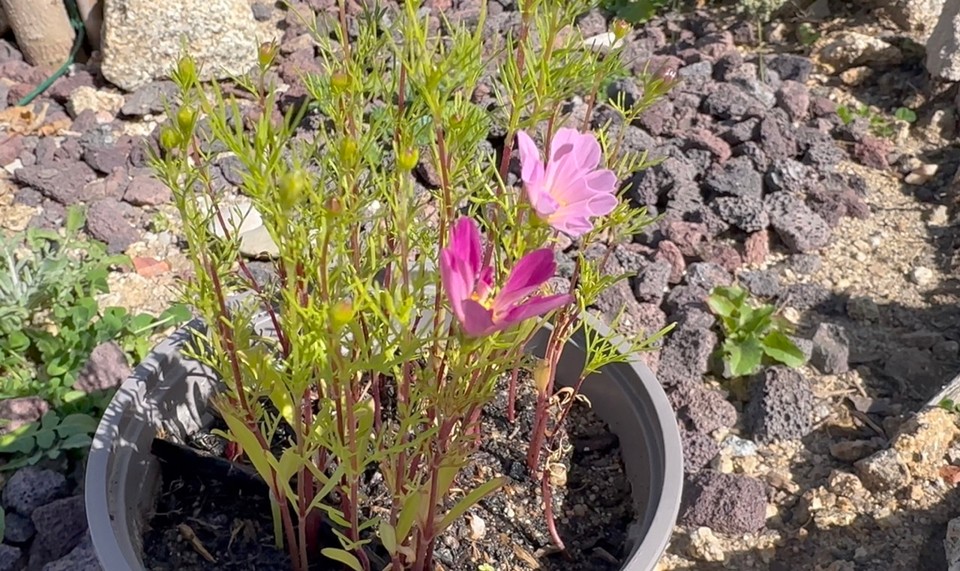
I usually use solid shampoos, but I was inspired by some new flowers growing in the garden. Like the flower petals, this shampoo's texture is soft and silky. I colored the product with some liquid pink cosmetic dye to give it a similar appearance to the new flowers.
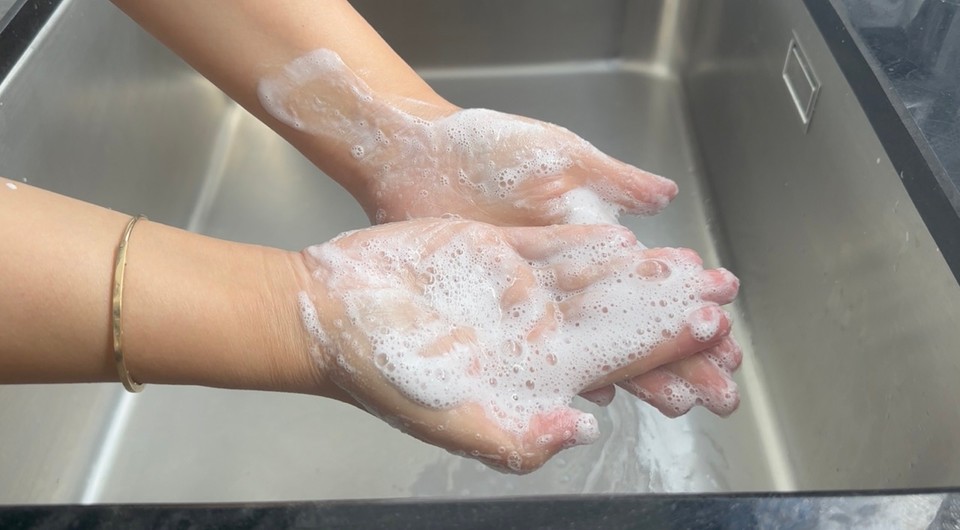
The silky, fluffy texture is created by whipping the mixture for a few minutes. You will need to whip the mixture to obtain the final texture and consistency.

This product reminds me a little of the whipped soap I shared here some time ago. If you like this type of product, check the formula for the whipped soap with its extra recipes to make different products.
Phase A contains the solid surfactant SCI and a liquid surfactant coco betaine. Coco betaine (NCI: Aqua, Coco Betaine) is an amphoteric surfactant derived from coconut oil. It is a very mild cleanser. You can use cocamidopropyl betaine instead. Cocamidopropyl betaine also comes from coconut oil but has a more complicated structure. It includes a propyl group and an amido group, making it a stronger cleansing ingredient than coco betaine.
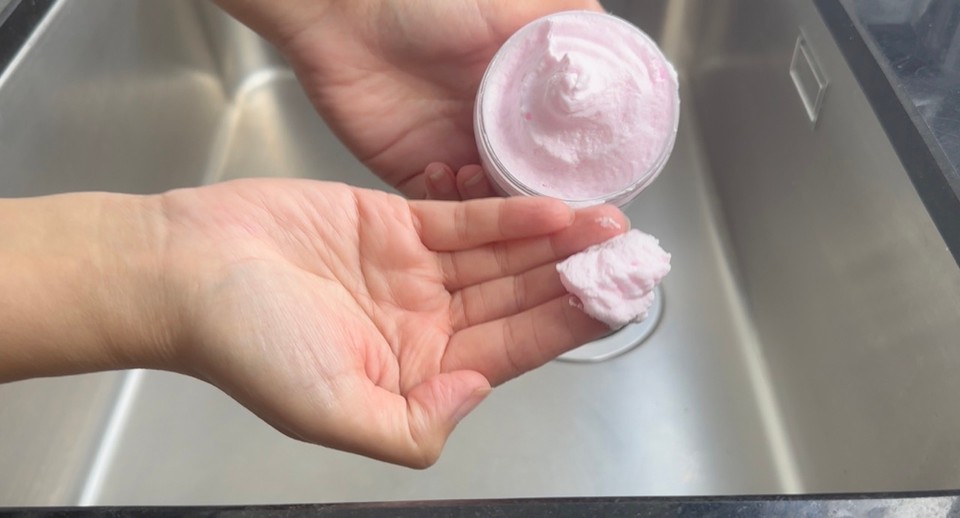
I also added stearic acid and cetyl alcohol in phase A. Stearic acid can contribute to the viscosity and texture of the shampoo/body wash, add moisturizing properties and help stabilize the product by preventing ingredient separation.
Cetyl alcohol acts as an emollient, making the hair soft and smooth, helps to detangle the hair, and serves as a thickening agent, adding to the creamy texture of the final product.
Lastly, I added coconut oil to phase A. Coconut oil has moisturizing properties and can penetrate the hair shafts, helping with hydration. Coconut oil can also help to achieve the shiny effect. You can replace the coconut oil by combining castor oil and shea butter or using only shea butter.
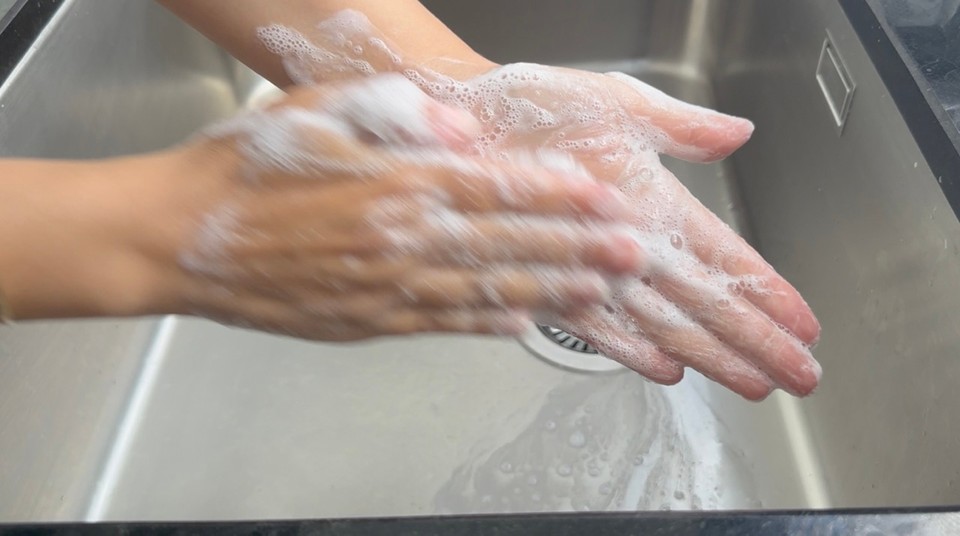
I combined panthenol (pro-vitamin B5) with glycerin, centella asiatica extract and citric acid for phase B.
Panthenol, functioning as a humectant, attracts and seals in moisture from the surroundings. Its application to the hair and scalp enhances hydration, making hair feel softer and easier to manage.
Panthenol can reduce frizz and enhance hair elasticity.
You can replace the panthenol with silk amino acids or hydrolyzed rice protein.
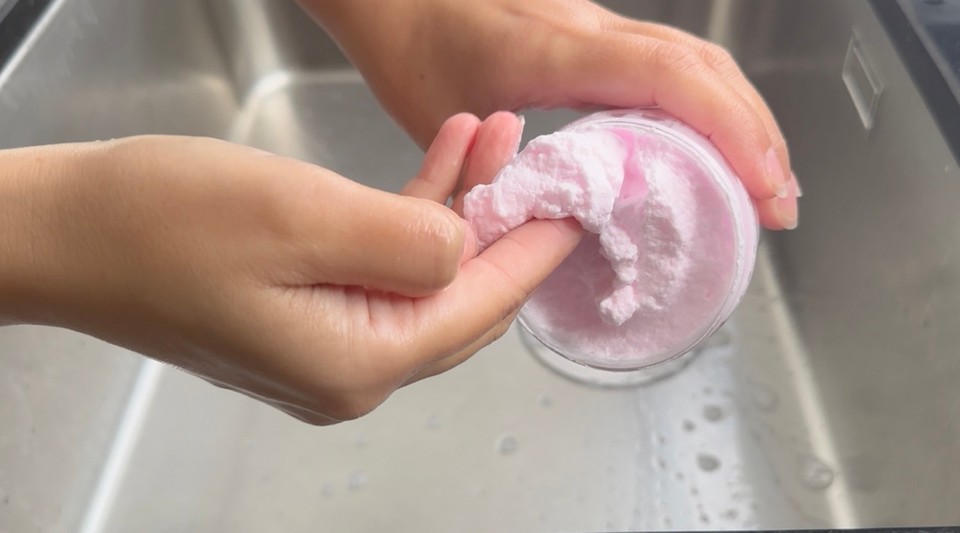
Citric acid helps lower the final product's PH and acts as a chelating agent, helping to bind and neutralize metal ions that may be present in the water used for washing the hair.
The panthenol and citric acid should be dissolved in the glycerin before we combine phase B with phase A.
I added 1% of Centella Asiatica Extract, which has soothing and anti-inflammatory properties and is known for helping blood circulation in the scalp. Centella asiatica extract also contains triterpenoids, compounds that can help strengthen the hair shaft and reduce breakage. You can skip this ingredient and add the amount to the glycerin. You can also swap it with rosemary extract or Lepidium Meyenii Root Extract.
Preservative is a must, and I used Cosgard, which you can replace with another broad-spectrum preservative. Make sure to check the usage rate according to the supplier's instructions. If you need to increase the percentage of your chosen preservative, you can reduce the amount of distilled water or vice versa.
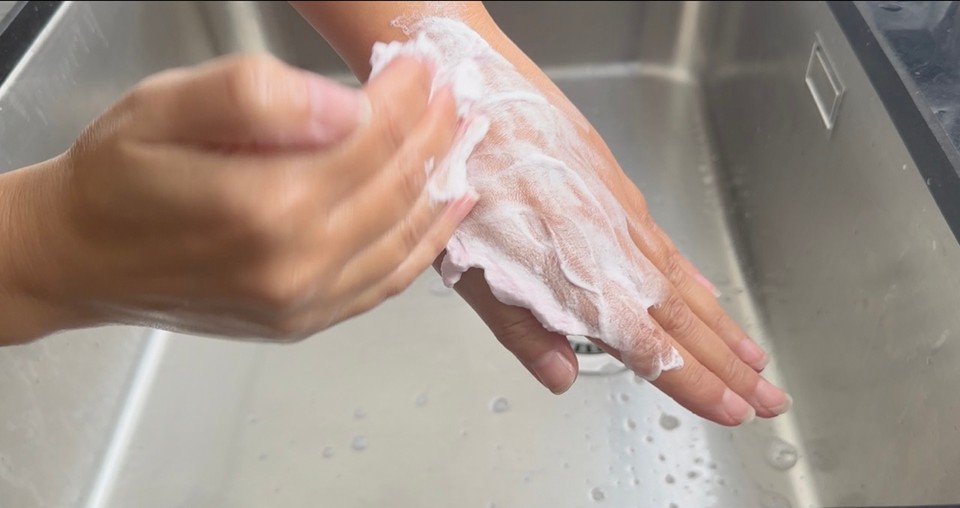
Choose a preservative suitable for the PH of your final product.
To read more about PH adjustments in cosmetics, please check this post.
You can use any fragrance oil you like, ensuring it's skin safe.
Use the calculator to adjust the amount you want to make.
Method:
- Place phase A ingredients into a heat-resistance beaker. Start with the stearic acid and cetyl alcohol, then add the coconut oil and other ingredients.
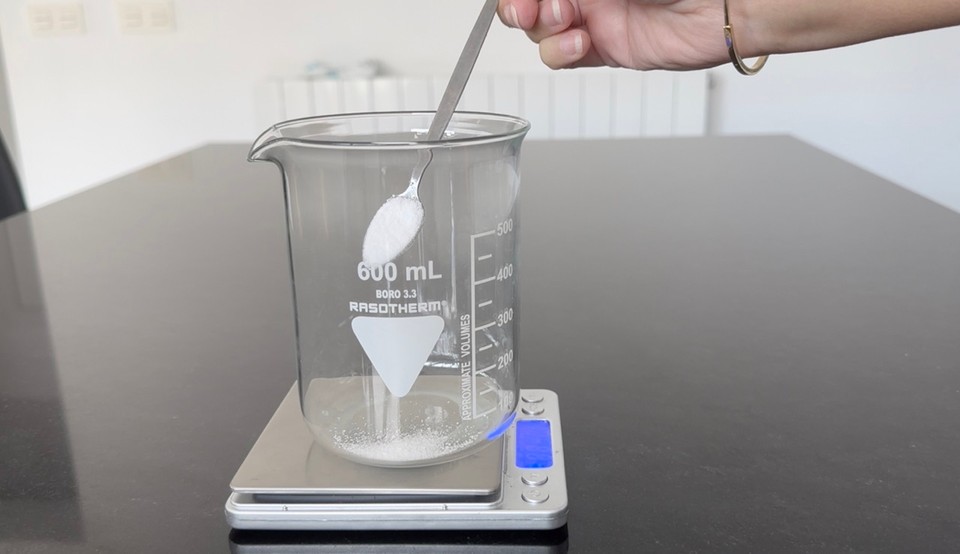
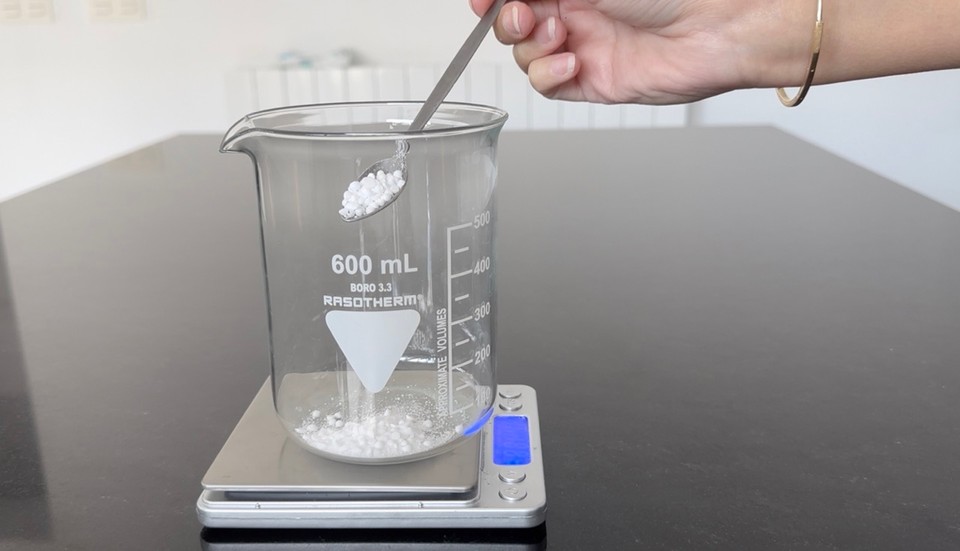

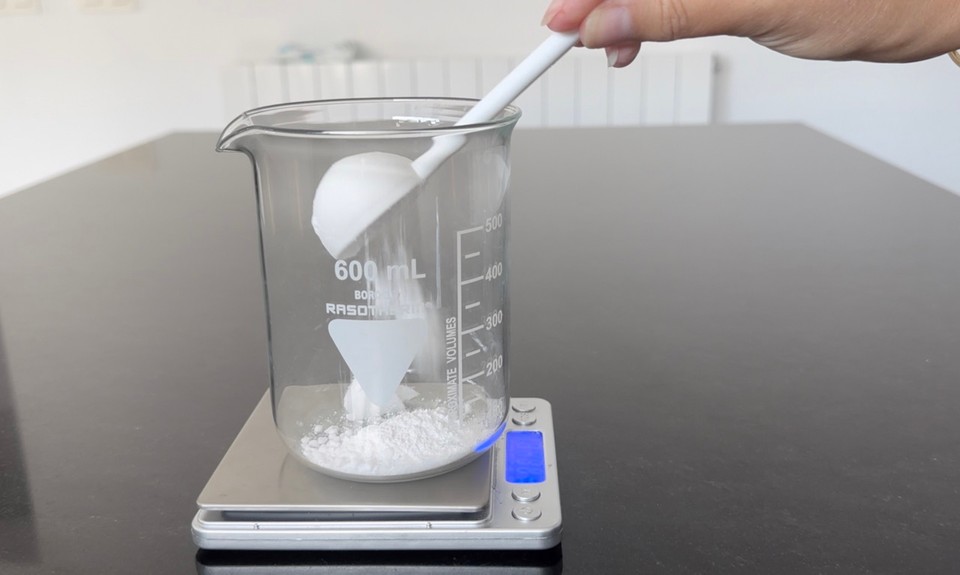

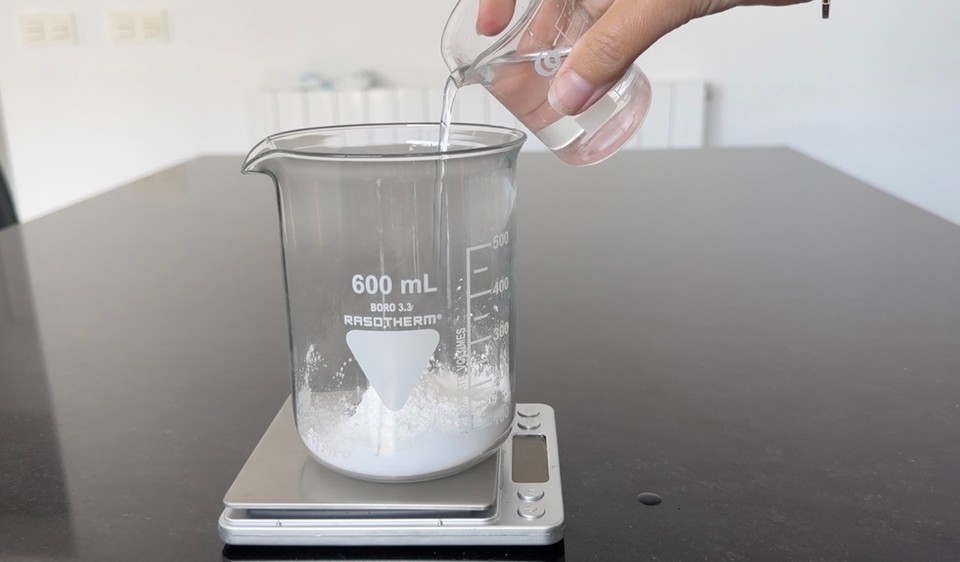

- Place phase A into a double boiler on medium heat. Stir the mixture every couple of minutes.
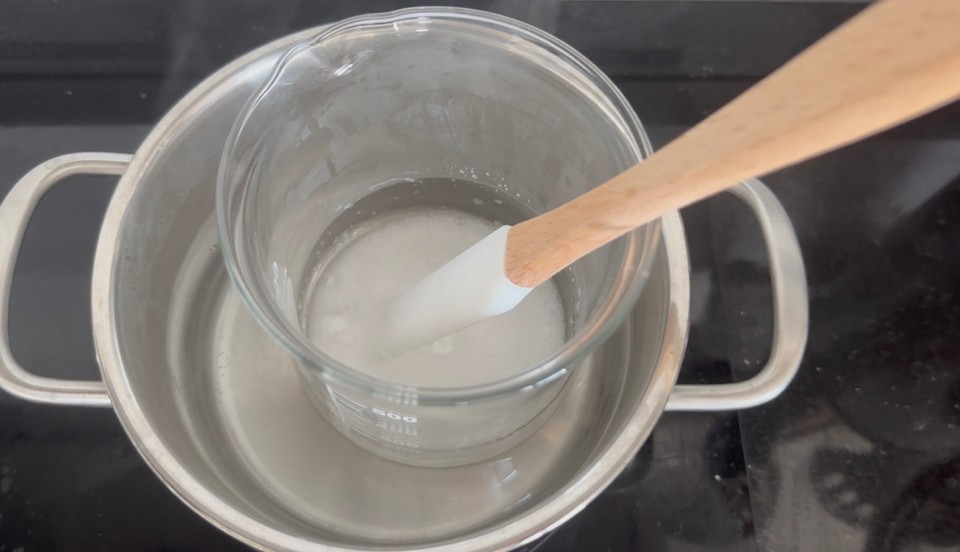
- Prepare phase B in a different container. Mix to dissolve the powders.


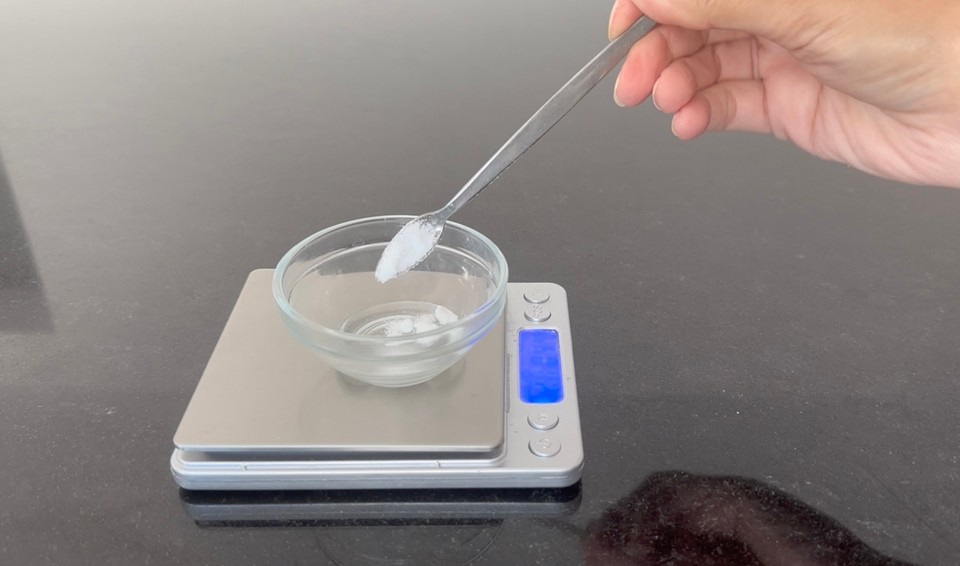





Remove phase A from the heat when everything is melted and combined.
Add phase B into phase A and stir to combine.
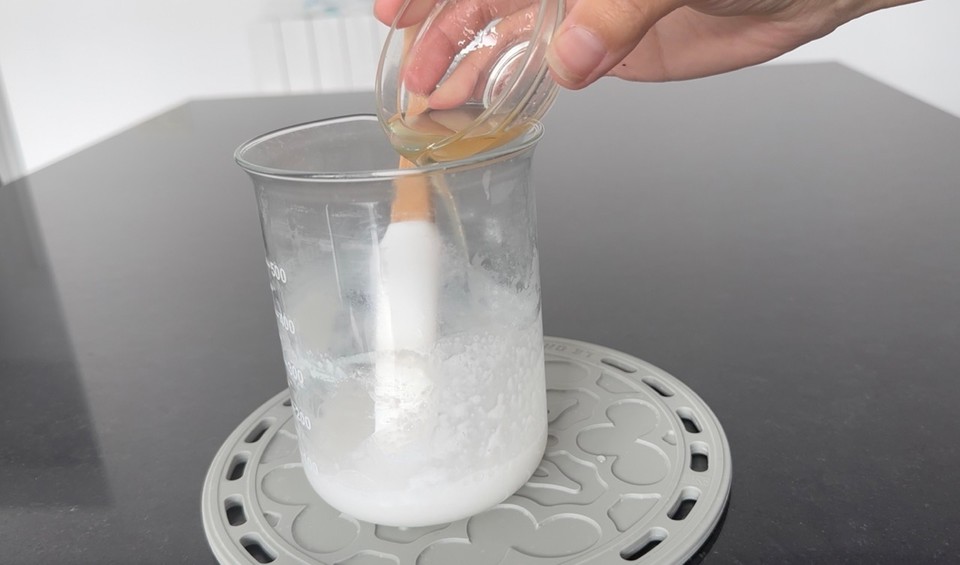
- Whip the mixture for a couple of minutes.
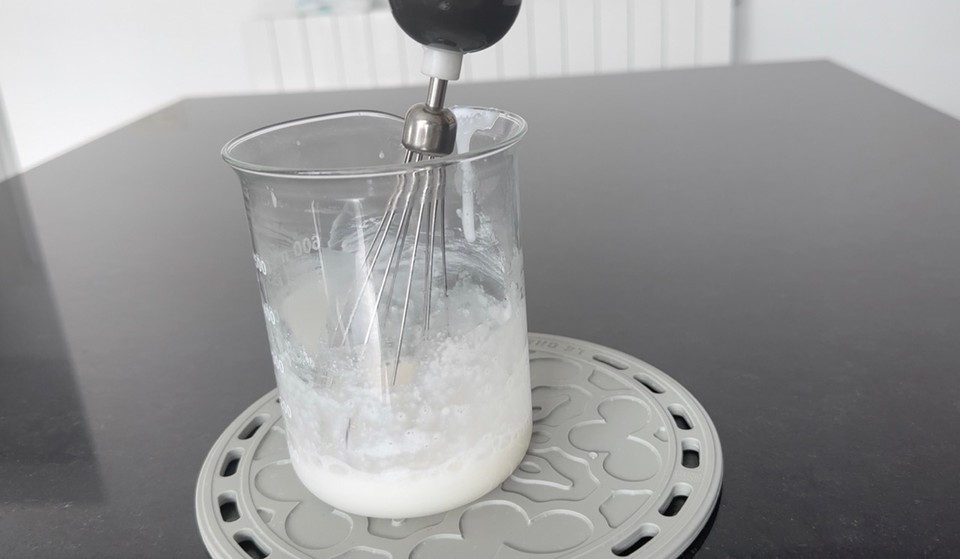

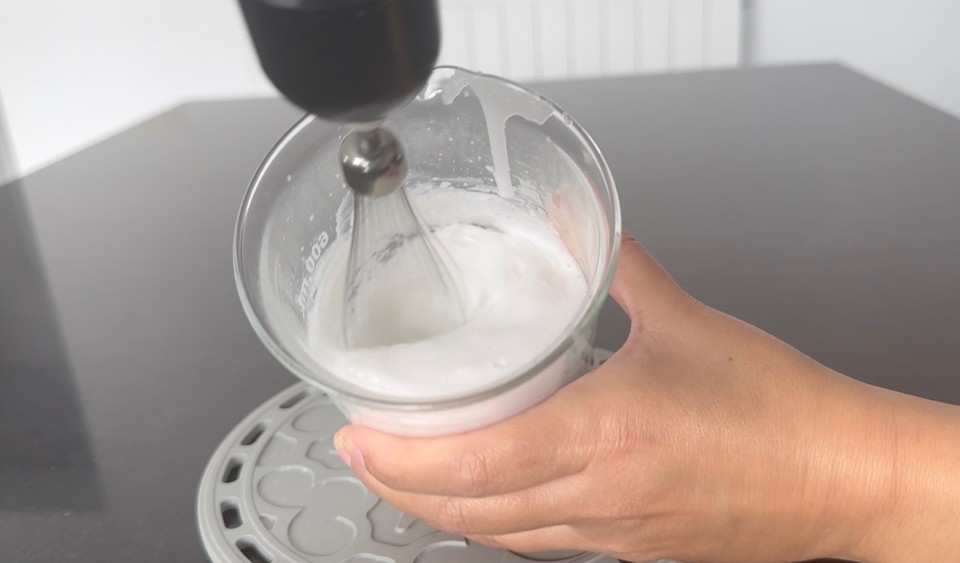
- Add the liquid color.
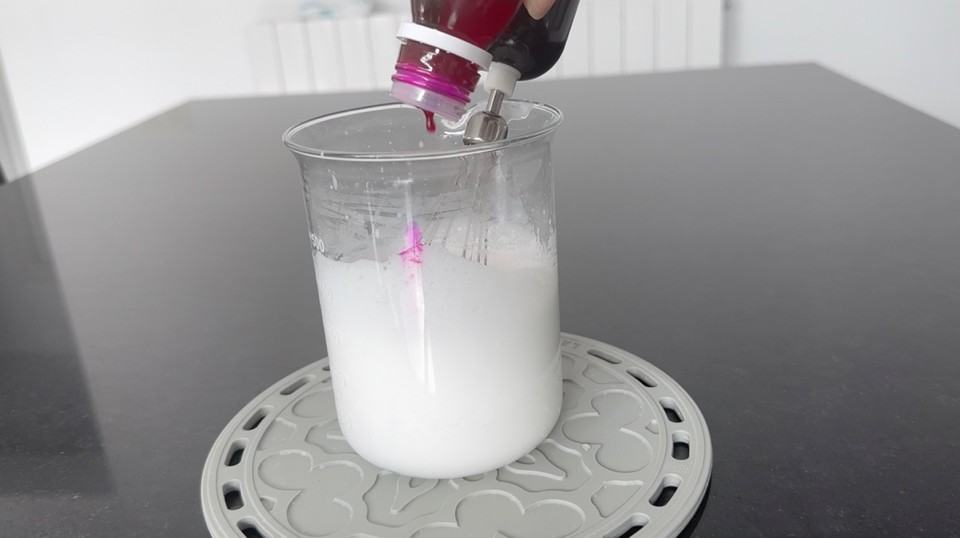
- Whip tp combine the color.
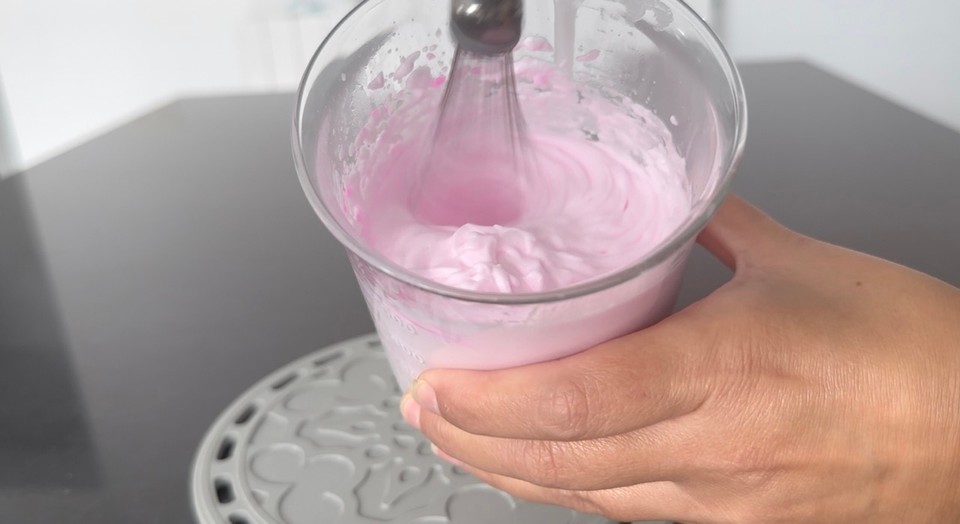



- Check the PH and adjust if necessary. To read more about PH adjustments, check this post.
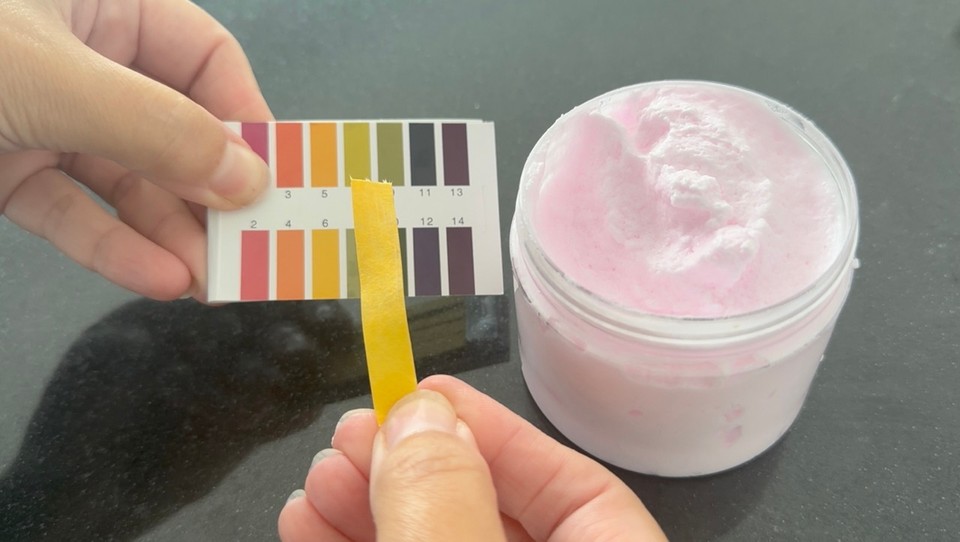
- Place the product into a jar container. To use the mousse, scoop a little product with dry hands and rub it between your hands to lather. Use the mousse as a shampoo, body wash or shaving cream.
